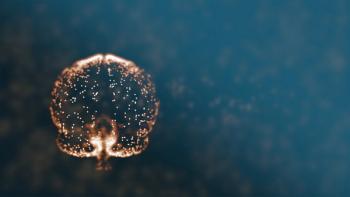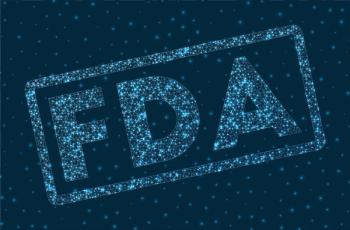
- Vol 42, Issue 7
Spotlight on Schizophrenia Data: Insights From Recent Conferences
Key Takeaways
- NBI-1117568, a muscarinic M4 agonist, showed significant symptom improvement in schizophrenia with a favorable safety profile in a phase 2 study.
- CPL’36, a phosphodiesterase 10A inhibitor, demonstrated efficacy in reducing PANSS scores in a phase 2 trial, maintaining a good safety profile.
Discover promising new treatments for schizophrenia, including NBI-1117568 and CPL’36, showcasing significant symptom improvements and safety profiles.
Check out new data on the schizophrenia treatment pipeline from recent spring conferences—the American Society of Clinical Psychopharmacology (ASCP) Annual Meeting in Scottsdale, Arizona, and the American Psychiatric Association Annual Meeting in Los Angeles, California. Complete coverage of this year’s meeting as well as previous meetings can be found at PsychiatricTimes.com.
NBI-1117568: Positive Phase 2 Results From the 2025 ASCP Annual Meeting
Leah Kuntz
Neurocrine Biosciences, Inc, shared data from a phase 2 study of NBI-1117568 in adults with schizophrenia, which showed a significant improvement in symptoms and overall severity and highlighted new data on the safety and tolerability of the treatment. NBI-1117568 is the first and only investigational oral muscarinic M4 selective orthosteric agonist in clinical development as a potential treatment for schizophrenia.1
“Traditional treatment approaches for schizophrenia can lead to significant short- and long-term challenges and often result in discontinuation of therapy. Given these challenges, there is a continued need for new, effective, and tolerable treatment options,” said Eiry W. Roberts, MD, chief medical officer at Neurocrine Biosciences.1 “This compound is promising, as it is a direct and selective muscarinic M4 receptor agonist, which is believed to be a key regulator of neurotransmitters impacted by schizophrenia, and we look forward to advancing its development in the phase 3 registrational program.”
In a 6-week, double-blind, placebo-controlled, dose-finding study, 210 adults aged 18 to 55 years with a primary diagnosis of schizophrenia who experienced an acute exacerbation or relapse of symptoms were randomly assigned 2:1 to either NBI-1117568 (20 mg, 40 mg, or 60 mg once daily or 30 mg twice daily) or placebo. Other antipsychotics were not allowed during the study. Participants were then seen at a 2-week safety follow-up. The primary end point was the change in total Positive and Negative Syndrome Scale (PANSS) score from baseline to week 6. The study showed statistically significant improvements in the PANSS total score with 20 mg of NBI-1117568 once daily by week 3 and at all subsequent visits through week 6. A statistically significant improvement was also observed by week 2 in the Clinical Global Impressions–Severity (CGI-S) scale, with continued improvement seen at all following visits through week 6. For all other doses (40 mg and 60 mg once daily, 30 mg twice daily), mean decreases from baseline at week 6 in the PANSS total and CGI-S scale scores were greater with NBI-1117568 than with placebo but not statistically significant.2
NBI-1117568 was generally safe and well tolerated at all doses. Treatment discontinuation rates due to adverse events were similar between NBI-1117568 and placebo. Adverse events with the highest incidence for NBI-1117568 compared with placebo were somnolence (10.7% vs 2.9%, respectively) and dizziness (9.3% vs 1.4%). Increases in heart rate were transient, attenuated over the course of treatment, and not clinically meaningful. No weight gain was associated with the NBI-1117568 treatment groups relative to placebo.1
References
1. Neurocrine Biosciences presents new positive data from phase 2 study of NBI-1117568 in adults with schizophrenia at American Society of Clinical Psychopharmacology 2025. News release. Neurocrine Biosciences Inc. May 28, 2025. Accessed May 29, 2025.
2. Kuntz L. New positive results for NBI-1117568 in adults with schizophrenia. Psychiatric Times. August 28, 2024.
New Data on CPL’36 for the Treatment of Acute Schizophrenia Exacerbation
Heidi Anne Duerr, MPH
Investigators presented data from a double-blind, randomized, placebo-controlled, parallel-group phase 2 study on CPL500036 (CPL’36), a phosphodiesterase 10A inhibitor intended to treat acute schizophrenia exacerbation.1,2 The dose-ranging study was designed to investigate the efficacy, safety, tolerability, and pharmacokinetics across 2 doses of CPL’36. The investigators defined the primary end point as a change from baseline in the PANSS positive subscale at day 28. They also looked at the change from baseline in the PANSS total and negative subscale scores and change from baseline in the Brief Assessment of Cognition in Schizophrenia score at weeks 2 and 4.
Participants (N = 189) included patients with acute exacerbation of schizophrenia. Baseline severity as measured by the PANSS was severe and moderate to severe, with a PANSS total score of approximately 106. Patients were randomly assigned at an equal ratio (1:1:1) to either one of the active doses, 20 mg CPL’36 or 40 mg CPL’36, or the placebo. All doses were administered once daily for 28 consecutive days.
At 4 weeks, investigators found improvement across all the studied PANSS scores. Specifically, patients receiving the 20-mg dose realized a 3.7-unit improvement from baseline (least square [LS] mean difference from placebo, P < .001, Cohen d = 0.73) on the positive PANSS subscale score, and participants receiving the 40-mg dose realized a 6.3-unit reduction (LS mean difference from placebo, P < .001, Cohen d = 1.38). Larger reductions were found on the total PANSS score at week 4 of treatment. Investigators recorded a 9.7-unit reduction from baseline among patients who received the 20-mg dose of CPL’36 compared with placebo (LS mean difference from placebo, P < .001, Cohen d = 0.77). Those who received the 40-mg dose demonstrated a 16.4-unit reduction (LS mean difference from placebo, P < .001, Cohen d = 1.47). The investigators also noted 2.6-unit reductions on the negative PANSS subscale score at week 4 of treatment for the participants who received the 40-mg dose of CPL’36 (LS mean difference from placebo, P < .001, Cohen d = –0.968). Overall, CPL’36 appeared to have a good safety profile.1
“CPL’36 demonstrated beneficial effects across multiple aspects of schizophrenia pathophysiology,” Jazwiec et al wrote.1 “These encouraging results support the continued development of CPL’36 as a drug candidate for the treatment of psychotic disorders.”
References
1. Jazwiec R, Rudzki P, Wieczorek et al. Cpl’36 Pde10a inhibitor is highly effective in the treatment of acute exacerbations from a phase 2 clinical trial. Presented at: American Psychiatric Association Annual Meeting; May 17-21, 2025; Los Angeles, CA.
2. Efficacy, safety and pharmacokinetics study of CPL500036 (PDE10A inhibitor) in patients with schizophrenia. ClinicalTrials.gov. Updated July 11, 2024. Accessed May 18, 2025.
Articles in this issue
5 months ago
Successfully Prescribing MAOIs for Depression5 months ago
The Hotseat...6 months ago
Using Serum Drug LevelsNewsletter
Receive trusted psychiatric news, expert analysis, and clinical insights — subscribe today to support your practice and your patients.

















